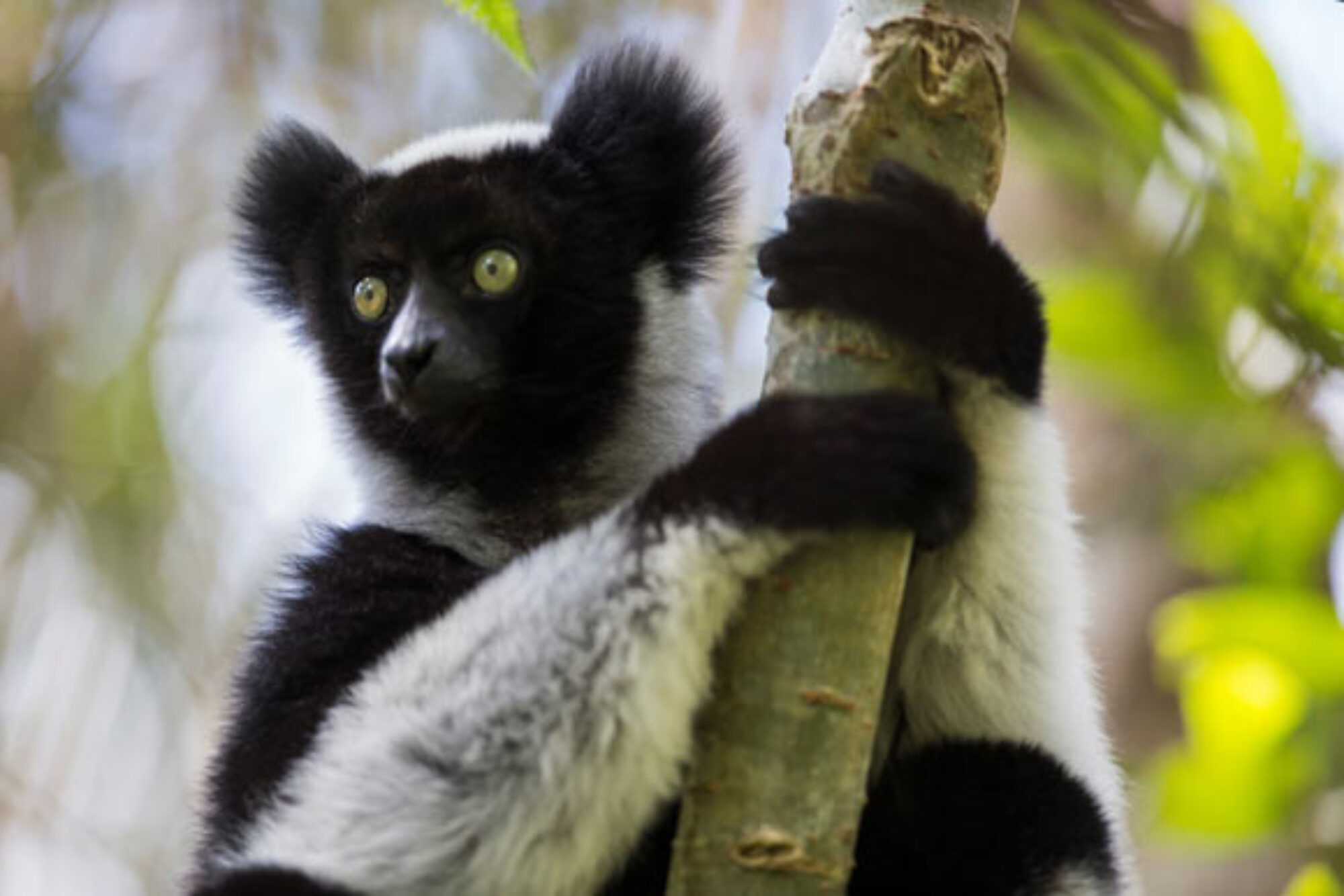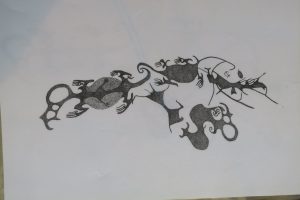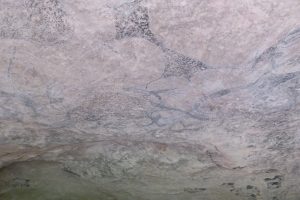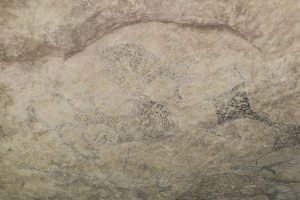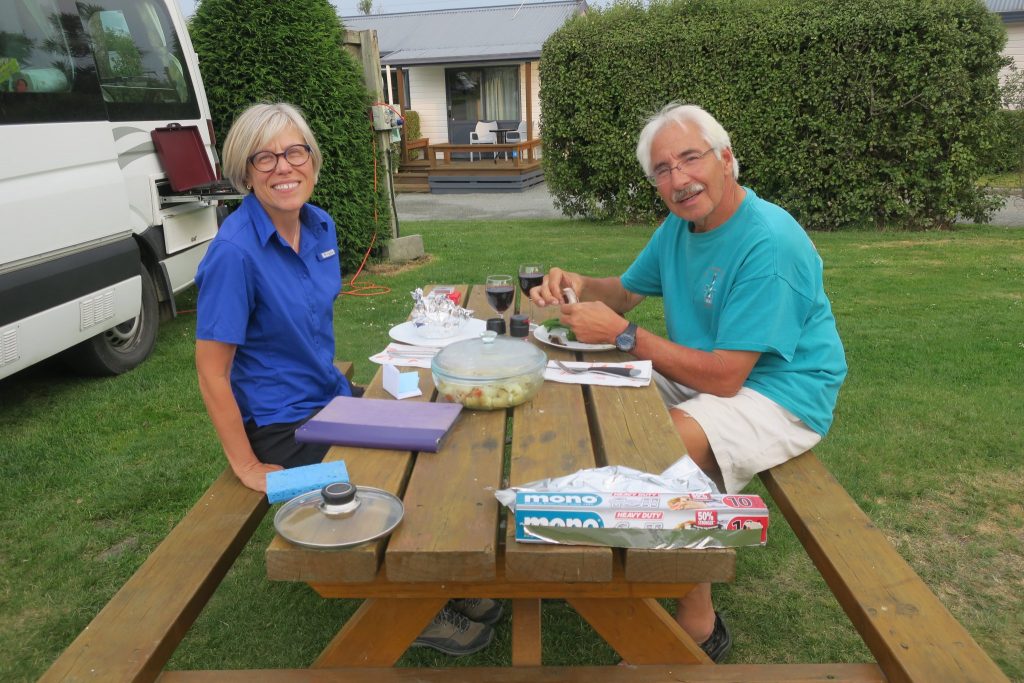Unfortunately we left the campground this morning before Edward and Diane were up so we didn’t get to say goodbye. We traveled about 3 hours to Timaru. Along the way we were commenting that the east coast looks lot different than the west coast. The cities on the east coast are bigger and have more facilities. Generally on the west coast the roads wind along forests and up and over mountains. The east roads are lined with fields of grazing sheep and cattle. We drove along the ocean for a while and it is turquoise in color. In the Caribbean the water is turquoise because the bottom is sand but that’s not the case here. I asked about it and the guide told me it is because it is rich in plankton.
We stopped for some breakfast. I also got a pie. They seem to make dinner pies filled with a variety of fillings. I’ve wanted to try one so I got a steak, bacon, and cheese pie for dinner.
We got to Timaru around noon and checked in at the campground. Yesterday we purchased tickets to the Maori Rock Art museum. We haven’t been exposed much to the Maori culture so we wanted to take this opportunity to learn. In addition to viewing the exhibition our tickets included going to see the actual rock art. We were supposed to be at the museum at 2 but we received a call saying that the weather was changing and it would be good if we got there early, so we packed up and drove to the museum.
There we were greeted by Wesley, a Maori man in his 20s. He told us about the Maori people and their culture. Here are some of the things he told or we learned via the exhibitions
- The Maori arrived in New Zealand somewhere between 700 and 1000 years ago. DNA suggests that they were a mix of various Polynesian backgrounds. He suggested they may have followed birds or whales to the islands.
- They lived in small tribes on the North and South Islands. The tribes on the north island were more aggressive while those on the south were more cooperative with each other.
- They live on fish, birds, and vegetables.
- Older people had their faces tattooed, women only tattooed their chins while men tattooed their whole faces.
- Maori legend says that mother earth married the sea but then the sea left and she thought he was dead so she married the sky but then the sea came back and fought the sea. The sea won and the sky fell on mother earth. When one of mother earth and the sky’s children stepped in and separated mother earth, the sky, and the sea. Another legend says that mother earth’s sons traveled and on their return journey their boat capsized. The brothers died and turned to stone, forming the islands of New Zealand, specifically the southern alps. There is a fault line under the alps which have resulted in earthquakes but the early Maori thought it was the brothers fighting that caused the earthquakes.
- The Maori of the south island banned together and arrived at a settlement with the government about 20 years ago. According to another Maori woman there the settlement has really benefitted the Maori of the south. The Maori from the Northern island never unified and still have not reached an agreement with the government.
After talking to Wesley and looking around at the exhibits, we followed Wesley to the cave with the art. It was in a small valley that the Maori were trying to return to its natural state. They had planned 7,000 trees and planned to plant another 43,000 trees. It was an ambitious project. We walked to the cave which was fenced off. It was hard to see the art work as the pigment was very faint. Here are pictures of the cave and a graphic clearly showing the art.
Here’s a picture of Wesley.
We said good bye and good luck to Wesley and returned to the campground. Rick made dinner and I had my pie which was quite good.
A good day.
